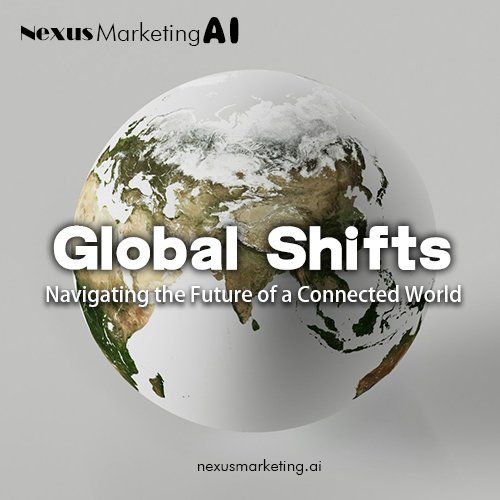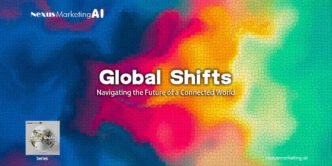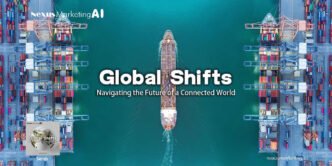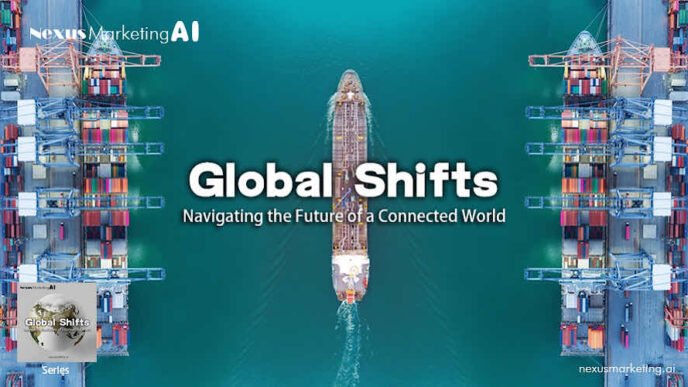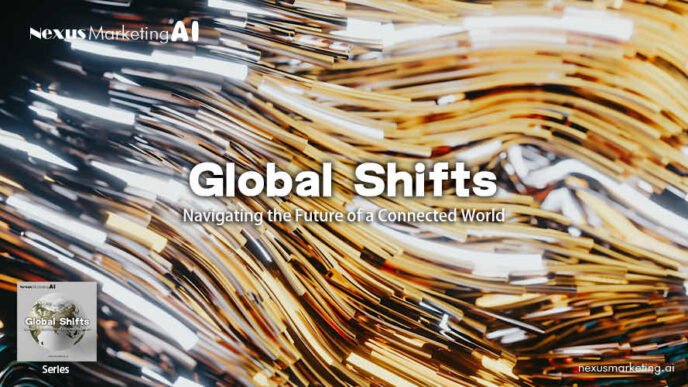Explore economic globalization through trade and investment flows, understanding how they drive international business and global growth.
Global Shifts
Navigating the Future of a Connected World
As the world becomes more interconnected, the forces driving globalization have far-reaching impacts on economies, businesses, and societies. This series dives deep into the core elements shaping today’s global landscape, from technological innovation and economic integration to cultural exchange and environmental sustainability.
Through a comprehensive exploration of these topics, “Global Shifts” offers thought-provoking insights into how businesses can adapt to this rapidly changing environment. Whether you’re a leader aiming to stay ahead of global trends or a professional seeking to understand the shifting dynamics of global trade, this series provides the essential knowledge to navigate the future of globalization.
Series
- Episode1.Globalization 101: Understanding the Basics
- Episode2.Economic Globalization: Trade and Investment Flows
- Episode3.Technological Globalization: The Role of Digitalization
- Episode4.Cultural Globalization: Cross-cultural Exchange and Influence
- Episode5.Political Globalization: Global Governance and Multilateralism
- Episode6.Sustainability in Globalization: Environmental Impact and Solutions
- Episode7.Global Supply Chains: Challenges and Opportunities
- Episode8.The Future of Globalization: Trends and Predictions
- Episode9.Challenges of Globalization: Inequality and Social Impacts
- Episode10.Globalization and Innovation: How Companies Stay Competitive
Table of Contents

Prefer to listen? Enjoy the audio version of this article
Curated audio version | Audio powered by AI
Defining Economic Globalization

Economic globalization is the process by which economies around the world become increasingly interconnected through the exchange of goods, services, capital, and information. It represents the economic dimension of globalization, driving international trade and investment across borders. The integration of national economies into a global marketplace has accelerated significantly over the past few decades, spurred by advancements in technology, reductions in trade barriers, and the liberalization of markets.

Overview of Economic Globalization
Economic globalization involves the expansion of cross-border transactions, foreign investments, and global financial flows. It allows businesses to operate in multiple countries, create international supply chains, and access new markets and resources. The process has transformed how nations engage with one another, fostering economic growth but also introducing challenges such as increased competition and dependence on global supply networks.

Why Trade and Investment Matter
Trade and investment are the backbone of economic globalization. International trade allows countries to specialize in producing goods and services where they have a comparative advantage, improving efficiency and productivity. Meanwhile, foreign direct investment (FDI) enables businesses to expand their operations globally, creating jobs, transferring technology, and stimulating economic development in the host countries.
The movement of goods, services, and capital across borders has fundamentally changed the global economy, leading to greater economic integration. However, it has also sparked debates about the fairness and sustainability of globalization, particularly in terms of how its benefits are distributed among countries and populations.
Global Trade: The Engine of Economic Globalization
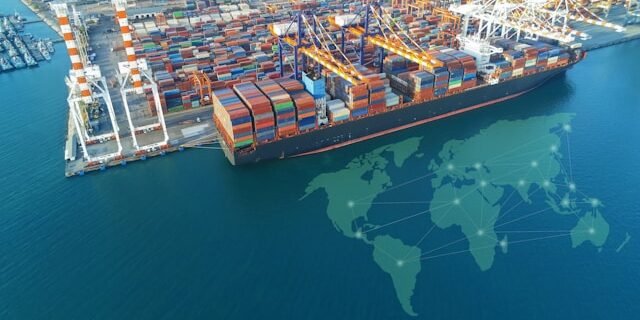
Global trade has been the primary driver of economic globalization, allowing countries to exchange goods and services more freely across borders. The liberalization of trade policies, the reduction of tariffs, and the establishment of global trade agreements have significantly expanded the volume of trade between nations. This increased exchange of goods and services has created a more interconnected global economy, fostering growth, innovation, and economic opportunity.

History of Global Trade
The history of global trade dates back thousands of years, with early examples such as the Silk Road connecting Europe, the Middle East, and Asia. However, modern global trade truly accelerated in the aftermath of World War II, when nations began to prioritize economic cooperation as a means of promoting stability and growth. The establishment of institutions like the General Agreement on Tariffs and Trade (GATT), which later became the World Trade Organization (WTO), marked a significant turning point in the development of global trade.
In the late 20th and early 21st centuries, global trade expanded further as technological advancements and the rise of emerging markets opened up new opportunities for businesses worldwide. Trade has grown exponentially, enabling countries to access markets they might not have otherwise reached.

Free Trade Agreements and Economic Integration
Free trade agreements (FTAs) have been a crucial component of economic globalization, reducing or eliminating barriers to trade between countries. Agreements such as the North American Free Trade Agreement (NAFTA), now replaced by the United States-Mexico-Canada Agreement (USMCA), and the European Union’s single market have facilitated the seamless movement of goods, services, and capital. These agreements promote economic integration by creating large, unified markets where businesses can operate without the restrictions typically imposed by national borders.
By fostering greater economic integration, FTAs allow countries to specialize in industries where they have a comparative advantage, leading to increased production efficiency and economic growth. However, they have also faced criticism, as not all industries or workers benefit equally from free trade.
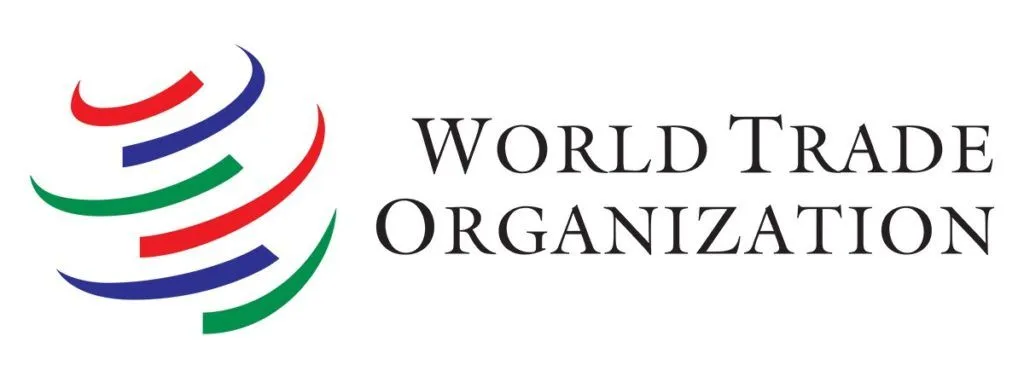
The Role of the World Trade Organization (WTO)
The World Trade Organization (WTO) plays a pivotal role in regulating and facilitating global trade. Established in 1995, the WTO sets the rules for international trade, mediates disputes between member nations, and oversees the implementation of trade agreements. By providing a framework for trade negotiations, the WTO ensures that trade flows as smoothly, predictably, and freely as possible.
The WTO has been instrumental in promoting global trade liberalization, helping reduce tariffs and other trade barriers. However, the organization has faced criticism for being slow to adapt to new trade challenges, such as the rise of digital commerce and growing concerns about environmental sustainability.

Trade Barriers and Tariffs
Despite the push towards free trade and economic integration, trade barriers such as tariffs, quotas, and regulatory restrictions still exist in many parts of the world. These barriers are often implemented by governments to protect domestic industries from foreign competition, promote national economic interests, or address political concerns. While they can provide short-term benefits for certain sectors, they also distort market efficiency and limit the potential for global economic growth.
Tariffs, which are taxes imposed on imported goods, are one of the most common trade barriers. They make foreign products more expensive, thereby encouraging consumers to purchase domestically produced goods. While this protects local industries, it can lead to higher prices for consumers and retaliation from trading partners, potentially sparking trade wars. For instance, the U.S.-China trade war, which saw both nations imposing tariffs on each other’s goods, disrupted global supply chains and slowed economic growth.
Non-tariff barriers, such as quotas, subsidies, and strict regulatory standards, also play a significant role in limiting trade. Quotas restrict the quantity of a certain good that can be imported, while subsidies provide financial support to domestic industries, allowing them to compete against foreign imports. These measures can hinder market competition and innovation while making it harder for developing countries to access international markets.

The Impact of Global Supply Chains
Global supply chains are an essential component of modern trade, enabling businesses to source materials, components, and services from different countries to optimize production. The development of complex global supply chains has allowed companies to reduce costs, improve efficiency, and increase flexibility by taking advantage of regional specializations.
For example, a smartphone may be designed in the United States, its components manufactured in China, South Korea, and Japan, and the final product assembled in Vietnam. This intricate web of production processes demonstrates the interconnectedness of global trade and how businesses rely on supply chains that span multiple countries.
However, the increasing dependence on global supply chains has also introduced vulnerabilities. Disruptions in one part of the chain, such as natural disasters, geopolitical tensions, or pandemics, can have a ripple effect throughout the entire system. The COVID-19 pandemic, for instance, exposed the fragility of global supply chains, leading to delays, shortages, and higher costs for businesses around the world.
Foreign Direct Investment (FDI): Driving Cross-Border Capital Flows

Foreign Direct Investment (FDI) is a key component of economic globalization, allowing businesses to expand internationally and stimulate economic development in host countries. Unlike portfolio investments, where investors simply buy shares or bonds in foreign companies, FDI involves direct control or influence over a foreign business or asset. This can take the form of building new facilities, acquiring or merging with existing businesses, or reinvesting earnings from foreign operations.

What is FDI?
Foreign Direct Investment refers to the flow of capital across borders with the purpose of establishing lasting economic relationships in a foreign country. FDI occurs when a company or individual from one country invests in assets or ownership stakes in businesses located in another country. This investment can result in significant transfers of technology, expertise, and capital, benefiting both the investing firm and the host country.
There are two main types of FDI:
- Greenfield Investments: This involves creating new business operations or production facilities in a foreign country from scratch. For example, when a multinational company builds a new factory or office in another country, it is considered a greenfield investment.
- Brownfield Investments: These occur when a company or individual acquires or leases existing facilities or businesses in a foreign country. An example would be a foreign corporation purchasing a local company to expand its market presence.

The Role of Multinational Corporations
Multinational corporations (MNCs) play a central role in driving FDI. By investing in foreign markets, MNCs expand their operations, gain access to new customers, and diversify their supply chains. For example, companies like Apple, Toyota, and Unilever have established a global presence through significant FDI, which allows them to produce and sell goods in various regions of the world.
FDI enables MNCs to take advantage of regional differences in costs, resources, and expertise. For instance, a company might choose to invest in a developing country to benefit from lower labor costs or access to raw materials, while bringing capital and advanced technologies that benefit the local economy. These investments can lead to job creation, infrastructure development, and the transfer of knowledge and skills to the host country.

FDI Trends in Developing and Developed Countries
FDI flows vary significantly between developing and developed countries. Developed countries, such as the United States, the European Union, and Japan, have traditionally been major recipients of FDI due to their stable political environments, advanced infrastructure, and large consumer markets. However, in recent decades, developing economies—particularly those in Asia, Africa, and Latin America—have attracted increasing amounts of FDI as they present new growth opportunities.
China, for example, has become one of the world’s largest recipients of FDI, as multinational corporations seek to tap into its rapidly growing consumer market and manufacturing capabilities. Similarly, India has seen a surge in FDI, especially in sectors like information technology, retail, and infrastructure. These emerging markets offer investors access to fast-growing economies, relatively lower production costs, and large populations of consumers.

FDI’s Impact on Local Economies
FDI can have both positive and negative effects on local economies. On the positive side, FDI can stimulate economic growth by creating jobs, increasing productivity, and fostering technological advancement. In many cases, foreign investors bring in new technologies and management expertise that can improve the efficiency and competitiveness of local industries. FDI also boosts infrastructure development, as foreign firms often invest in transportation, communication, and energy resources to support their operations.
However, FDI can also present challenges. Some critics argue that FDI can lead to the domination of local markets by foreign corporations, which may stifle the growth of domestic industries. There is also concern that profits generated by FDI may be repatriated to the investor’s home country rather than reinvested locally, limiting the long-term benefits for the host economy.
Global Financial Markets and Capital Flows

Global financial markets are a critical component of economic globalization, facilitating the movement of capital across borders. These markets enable countries, businesses, and investors to trade currencies, bonds, stocks, and other financial assets internationally, supporting investment and trade on a global scale. The rise of global financial markets has allowed for more efficient allocation of resources, but it has also introduced new risks and challenges, particularly in times of financial instability.

The Role of Global Financial Markets
Global financial markets serve as a mechanism for connecting investors with investment opportunities around the world. These markets allow businesses to raise capital by issuing stocks and bonds to international investors, while also providing liquidity for companies and governments seeking funding for large-scale projects. Through these markets, capital can flow to regions or industries where it is most needed, supporting economic development and innovation.
For example, developing countries often rely on global financial markets to attract the investment required for infrastructure projects, such as building roads, power plants, and telecommunications networks. Investors, in turn, are able to diversify their portfolios by investing in a wide range of markets and industries, reducing risk and enhancing potential returns.

Financial Deregulation and Its Impact on Globalization
Over the past few decades, many countries have implemented financial deregulation, which has played a significant role in promoting economic globalization. Deregulation refers to the removal or reduction of government restrictions on financial markets, allowing for greater freedom of movement for capital. This has encouraged foreign investment and made it easier for businesses and investors to operate on a global scale.
Financial deregulation has led to a surge in cross-border capital flows, enabling businesses to expand internationally and facilitating the growth of multinational corporations. However, it has also introduced new risks. The liberalization of financial markets has made them more vulnerable to speculative bubbles and financial crises. The 2008 global financial crisis, for instance, was fueled in part by the deregulation of financial institutions and the interconnectedness of global markets, which allowed the effects of the U.S. housing market collapse to spread rapidly across the world.

International Financial Institutions (IMF, World Bank)
International financial institutions, such as the International Monetary Fund (IMF) and the World Bank, play a central role in the global financial system. These institutions were established after World War II to promote international economic cooperation, provide financial assistance to countries in need, and ensure global financial stability.
The IMF primarily focuses on maintaining stability in the international monetary system by monitoring exchange rates, providing financial assistance to countries facing balance-of-payments problems, and offering policy advice to help countries stabilize their economies. The IMF also serves as a lender of last resort, offering short-term financial support to countries experiencing financial crises.
The World Bank, on the other hand, focuses on long-term economic development and poverty reduction. It provides financial and technical assistance to developing countries for projects that promote economic development, such as infrastructure, education, and healthcare. The World Bank’s aim is to help countries build the foundations for sustainable economic growth and reduce poverty.
Both institutions have been instrumental in supporting economic globalization by providing the financial infrastructure necessary for the free flow of capital and fostering global economic integration. However, they have also faced criticism for imposing stringent economic reforms, often referred to as “structural adjustment programs,” on countries receiving assistance. These reforms, which typically include austerity measures, privatization, and trade liberalization, have sometimes led to social unrest and economic hardships in the recipient countries.
The Benefits and Challenges of Economic Globalization
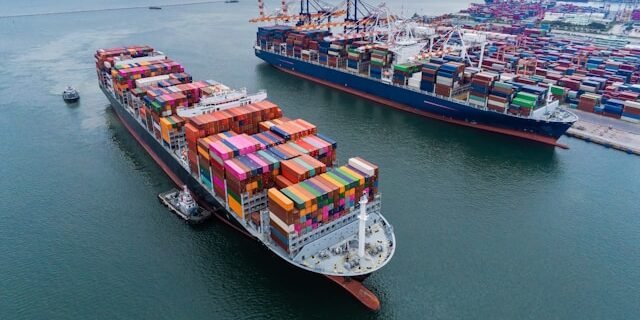
Economic globalization has created numerous opportunities for growth and development, allowing countries to benefit from the free flow of trade, investment, and capital. However, it has also introduced several challenges that have raised concerns among policymakers, businesses, and citizens alike. Understanding the benefits and challenges of economic globalization is essential for navigating its complexities and ensuring that its advantages are shared more equitably.

Benefits of Trade and Investment
The benefits of economic globalization are most evident in the areas of trade and investment. By removing trade barriers and facilitating cross-border investments, globalization has enabled countries to specialize in the production of goods and services where they have a comparative advantage. This specialization increases overall efficiency, leading to higher productivity and lower costs for consumers.
- Economic Growth: One of the most significant benefits of economic globalization is the promotion of economic growth. Countries that have embraced open markets and trade liberalization, such as China and India, have experienced rapid economic development, lifting millions of people out of poverty.
- Innovation and Technology Transfer: Globalization also promotes the spread of innovation and technology. Multinational corporations often bring new technologies and expertise to the countries in which they invest, enhancing local productivity and competitiveness. This transfer of knowledge can help developing countries catch up with more advanced economies.
- Increased Consumer Choice: For consumers, globalization has led to a wider variety of goods and services at competitive prices. The ability to access products from around the world, whether it’s electronics, clothing, or food, has improved the quality of life for people in many countries.

Challenges of Economic Globalization
While economic globalization offers many benefits, it also presents challenges that must be addressed to ensure its sustainability and inclusiveness.
- Income Inequality: One of the most pressing concerns is the growing income inequality both within and between countries. While globalization has created wealth and lifted millions out of poverty, it has also widened the gap between the rich and the poor. High-skilled workers and capital owners in developed countries have often benefited the most, while low-skilled workers have faced wage stagnation or job displacement due to competition from cheaper labor abroad.
- Labor Market Disruptions: Globalization can disrupt local labor markets, particularly in developed economies. As companies move production to countries with lower labor costs, workers in higher-cost regions may lose their jobs, leading to social and economic instability. The offshoring of manufacturing and service jobs has been a source of concern in many developed countries, contributing to political unrest and protectionist sentiments.
- Environmental Degradation: The rapid expansion of global trade and industrial activity has also had negative environmental impacts. Increased production and transportation of goods have contributed to higher carbon emissions, pollution, and the overexploitation of natural resources. While globalization has spurred economic growth, it has often done so at the expense of environmental sustainability.

The Debate Over Globalization’s Fairness
The fairness of globalization is a topic of ongoing debate. Critics argue that the benefits of globalization are unevenly distributed, with wealthy nations and corporations reaping the rewards while poorer countries and populations bear the brunt of its negative effects. This has led to calls for more equitable policies that ensure the gains from globalization are shared more broadly.
- Developing vs. Developed Countries: Developing countries often face difficulties competing with more advanced economies in the global market. Although globalization has helped some developing nations grow, others remain trapped in cycles of poverty, unable to compete due to limited resources, poor infrastructure, or restrictive trade policies.
- Corporate Power: Another concern is the growing power of multinational corporations, which can wield significant influence over national governments and economies. These corporations may prioritize profit over social and environmental responsibility, leading to exploitation and inequality in certain regions.
The Future of Economic Globalization

Economic globalization has brought about profound changes in how countries, businesses, and individuals interact. It has fueled unprecedented economic growth, facilitated technological innovation, and expanded consumer choices. However, as globalization continues to evolve, it also presents significant challenges that need to be addressed to ensure that its benefits are more evenly distributed and sustainable.

Trends Shaping the Future of Global Trade and Investment
Looking ahead, several key trends are likely to shape the future of economic globalization. Digitalization is transforming global trade, with e-commerce platforms, digital services, and remote work creating new opportunities for cross-border commerce. Regionalization is also gaining traction, with countries forming regional trade agreements to reduce dependence on global supply chains. Furthermore, sustainability is becoming a critical consideration in global trade and investment, as businesses and governments prioritize environmental and social responsibility.
These trends suggest that while globalization will continue to evolve, it may take on new forms that emphasize more localized and sustainable economic practices. The integration of digital technologies and the shift toward regional supply chains could lead to a more resilient and adaptable global economy.

Navigating the Complexities of Economic Globalization
For businesses and governments, navigating the complexities of economic globalization requires a balanced approach. On the one hand, embracing globalization can lead to new growth opportunities, improved efficiency, and access to international markets. On the other hand, it is essential to address the social and environmental challenges that come with increased global integration.
Policymakers must craft strategies that promote inclusive economic growth while mitigating the negative impacts of globalization, such as income inequality and environmental degradation. For businesses, investing in sustainable practices, fostering innovation, and developing resilient supply chains will be key to thriving in an increasingly interconnected world.

Link to Next Episode: Technological Globalization
The next episode, “Technological Globalization: The Role of Digitalization,” will explore how advancements in technology are driving further economic integration. From the rise of e-commerce to the widespread adoption of digital communication tools, technology is transforming the global economy and reshaping the way businesses operate across borders.
FAQs
-
How does economic globalization influence global trade patterns?
Economic globalization reshapes global trade patterns by encouraging countries to specialize in producing goods and services where they have a comparative advantage. This leads to increased international trade, supply chain integration, and a shift towards more interconnected markets. Trade agreements and reduced tariffs further enhance cross-border commerce, making it easier for countries to exchange goods and services.
-
What is the impact of foreign direct investment (FDI) on developing economies?
Foreign direct investment (FDI) can have significant positive impacts on developing economies by providing capital, creating jobs, and transferring technology and expertise. However, it can also lead to challenges such as market dominance by foreign companies, potential exploitation of local resources, and a dependency on external investors. The overall impact of FDI depends on how well a country manages and regulates these investments.
-
How do trade agreements facilitate economic globalization?
Trade agreements, such as NAFTA, the European Union, and the Regional Comprehensive Economic Partnership (RCEP), facilitate economic globalization by reducing trade barriers, standardizing regulations, and promoting cooperation among member countries. These agreements help to streamline the flow of goods, services, and investments, making international business more efficient and less costly.
-
What role do multinational corporations (MNCs) play in economic globalization?
Multinational corporations (MNCs) are key drivers of economic globalization, as they operate across multiple countries and facilitate international trade and investment. MNCs often set up global supply chains, transfer technology, and influence global economic policies. Their ability to move capital, resources, and labor across borders significantly impacts local economies and the global market.
-
How does economic globalization affect labor markets?
Economic globalization affects labor markets by creating new job opportunities in export-oriented industries while also leading to job losses in sectors that cannot compete with cheaper foreign imports. It can cause shifts in the demand for skills, with higher demand for skilled labor in globalized industries and less demand for low-skilled jobs that are more susceptible to outsourcing and automation.
-
What are the environmental consequences of increased trade and investment flows?
Increased trade and investment flows can lead to environmental consequences such as resource depletion, pollution, and carbon emissions due to expanded industrial activities and transportation. However, economic globalization also facilitates the spread of green technologies and international environmental standards, which can help mitigate some of these negative impacts.
-
How does economic globalization influence income inequality?
Economic globalization can contribute to income inequality by disproportionately benefiting high-skilled workers and capital owners while low-skilled workers face wage stagnation and job insecurity. In developed countries, this often manifests as a widening gap between the wealthy and the working class, while in developing countries, urban areas may prosper more than rural regions.
-
What is the role of financial markets in economic globalization?
Financial markets play a crucial role in economic globalization by enabling the free flow of capital across borders. Globalized financial markets facilitate investments, currency exchange, and the financing of international trade. However, they also introduce risks such as financial contagion, where economic instability in one country can quickly spread to others through interconnected financial systems.
-
How do protectionist policies impact economic globalization?
Protectionist policies, such as tariffs, quotas, and trade barriers, can hinder economic globalization by restricting the flow of goods, services, and investments. These measures are often implemented to protect domestic industries but can lead to trade wars, reduced economic efficiency, and higher costs for consumers. Protectionism can slow down the benefits of globalization and create economic tensions between countries.
-
What are some future trends in economic globalization?
Future trends in economic globalization include the rise of digital trade, increasing regional trade agreements, and a shift towards more sustainable and socially responsible investment practices. Technological advancements, such as blockchain and AI, will continue to shape global trade and investment flows, while geopolitical dynamics and environmental concerns may redefine how countries engage economically on the global stage.


